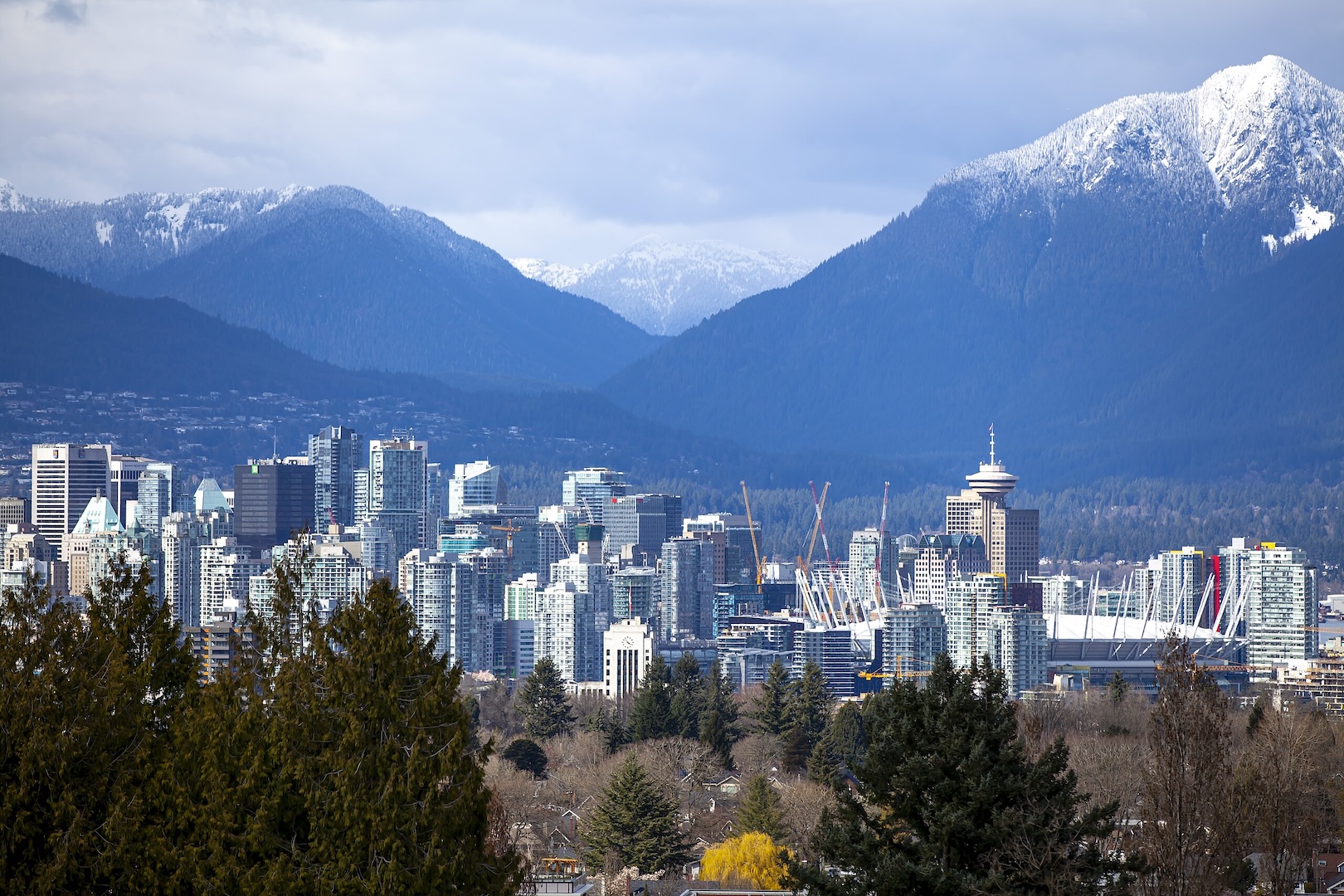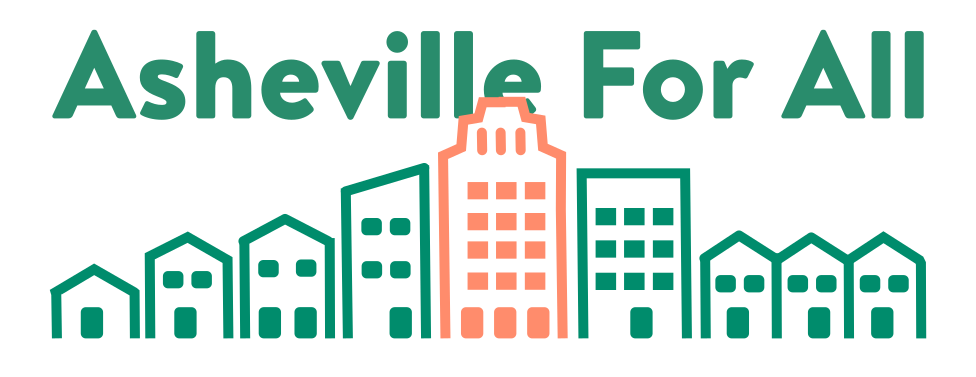Blocking Highways Must Mean Allowing Housing
April 23, 2025
This member commentary post does not necessarily reflect the views of Asheville For All or its members.
In the 1960s and 1970s, the city of Vancouver, British Columbia said “no” to highways. It was one of what would become a number of “highway revolts” across North America: organized protests that actually succeeded in blocking highway expansion.
If you’ve ever been to Vancouver, it’s a beautiful city. I have some family that lives there. One of the things that’s remarkable about it is just how connected all of the neighborhoods feel. There are literally no highways running through the city. It’s a pedestrian’s paradise.

In the decades that followed its highway revolt, the city’s planners effectively created some ground rules. There would be no highways, ever—that was the main idea. They also chose to invest in public transit and bike and pedestrian infrastructure. And the other main idea, they determined, was that if Vancouver was to remain highway-free, they would have to allow mixed-use neighborhoods. They would have to allow their core residential neighborhoods to grow. Because otherwise, how would people get from their homes to their jobs in and near downtown, and to employers such as the city’s large research university?
In other words, if you’re going to ban highways, you’re effectively banning suburbs. And if suburbs are where people tend to live in North America, you need to find other places for people to live—places that don’t require highways. Today, according to Wikipedia, Vancouver has the fourth-highest residential population density of any city in North America.
(I don’t want to leave the impression that Vancouver did everything right. Like many anglophone cities around the world, it is now facing a housing crisis, largely because of exclusionary zoning. There are still large parts of the city’s core that are set aside for only single-family, detached homes.)
* * *
This is, of course, a blog post about Asheville.
There is currently a movement of residents pushing back on the I-26 Connector project. Specifically, the opposition is to a proposed eight-lane overpass that would divide Patton Ave. in two parts. (As I understand it, this proposal is contrary to a previously affirmed idea that Patton Ave. would be a walkable commercial district.)
Does Asheville need more highways? Readers of this blog are likely familiar with the idea of “induced demand”—the idea that typical driving patterns are determined in part by the time that one spends in a car, and so if you make it quicker and easier to get around, people are just going to drive more and drive further. This then induces suburban sprawl, and drives up “vehicle miles traveled”, or VMT, a statistic that climate scientists caution must be reduced.
Unfortunately, Asheville is already sprawling because of another phenomenon: policies and processes that oppose infill housing.
If you look at where the city’s new apartment buildings are being built, they tend to be on the periphery. By Lake Julian, or on Sweeten Creek Road. Or Smokey Park Highway. Or just outside the city limits. The resulting effect is what I call the “donut shaped city.” It’s the reverse of the way we usually think about what cities should look like—like a cone, with taller buildings and higher density towards the center.
Donut shaped cities mean longer trips by their very form. Imagine if you drew a circle, and placed dots around the circle’s diameter. And then try to connect those dots. The dots represent trip destinations and origins. If the resulting lines are car trips, then half the time, you have to drive across the “donut hole.” Imagine an alternative image—lots of dots, closer to the center. Connecting those dots is much easier.
It gets worse, because the most walkable infrastructure isn’t to be found on the periphery of a city—especially cities that were around before the mid-20th century. So by adding more housing where there is little in the way of traditional, walkable, bike-friendly, or mixed-use design, it only makes the city more dependent on car-centric infrastructure. More wide roads, more parking, and more distance to travel because of it all.
Asheville’s emerging donut shape may be due in part to factors beyond its control. Certainly, it’s harder to place new apartment buildings in places where buildings already exist, all other things being equal. (And we don’t really want to see “urban renewal 2.0”!) But it’s undoubtedly true that a big part of the problem is that comparative incentives are driving developers to look outside of Asheville’s core neighborhoods. It’s easier and quicker to get new homes built in areas where there won’t be so much opposition as, say, a relatively wealthy residential neighborhood in North Asheville just a five minute stroll from downtown.
So if a UNCA student has to live off of Long Shoals Road in order to afford an apartment, they’re going to be driving on I-26 everyday—there’s really no other feasible option for them. Widening I-26 might be “evil”, but it seems like it’s becoming more and more of a necessary one.
* * *
Personally, I’m not a big fan of highways and the way that they divide neighborhoods, and I don’t necessarily believe that Asheville needs any of its highways to be widened or expanded at the moment. (To be clear, I know that some of the recent opposition to NCDOT’s I-26 plans is not about the addition of more highway lane-miles per se. Though I imagine that the more lanes that NCDOT plans to add to I-26, the harder it would be to put those lanes below Patton Ave. rather than above. And unfortunately, the reality is that below-ground highways divide neighborhoods too—just look at Haywood Road in West Asheville, or the infamous case of I-94 in one of my favorite cities, Minneapolis.)
I also believe that Ashevilleans must understand the other side of the coin. If we’re going to stop or mitigate highway expansion, we need to start creating more infill housing in core neighborhoods near jobs, schools, and other amenities.
You can complain about traffic, and you can complain about highways. And you can even complain about how much you hate to see new housing built if that’s how you think. But it sure seems hypocritical to complain about all three.
Postscript
If you’ve read this far, you might be interested in Asheville For All’s new “campaign” page that lets you send a message to your North Carolina reps in support of four pro-housing-infill bills that have been recently introduced in the Senate. Please take two minutes to check it out.
This member commentary post does not necessarily reflect the views of Asheville For All or its members.
